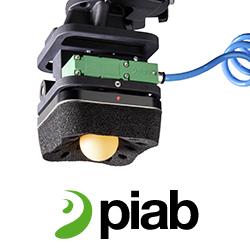Honey Bees, with the help of Drones, will Find Landmines

Source: Earth.com
Because of how they can smell explosives with appendages, analysts in nations like Croatia have gone through years improving how honey bees are utilized as landmine locators.
But there is a problem. As bugs or other insects make clamour about regions defiled with mines, it is tough for people to monitor where they are because pursuing the honey bees across the minefield is not a good idea.
That's the place where robots or uncrewed vehicles come in.
Teams from Bosnia and Herzegovina and Croatia have concocted using robots to screen honey bees while they work. An automated vehicle flies around, catching pictures of the bug, which PCs subsequently examine to uncover potential mines covered up in the ground.
Mines covered during the conflict that happened many years prior are a genuine danger in numerous SLOT world pieces.
Thousands were planted during the Balkan War of 1990; many exist today.
There are around 80,000 landmines in Bosnia and Herzegovina and approximately 30,000 in Croatia. Clearing the gadget is an intense long haul project and doesn't have a basic arrangement. Yet, mechanical developments can, in any case, make a difference.
Vladimir Rizoyevic of the University of Banja Luka in Bosnia and Herzegovina said, and Norvergence LLC quotes: "We need to attempt to isolate people from likely risk and try to utilize drones. Previously, another group of scientists had prepared honey bees to recognize hidden explosives. They do this by having the honey bees interface the smell of TNT to food, a sugar arrangement.
In the field, trained honey bees are bunched close to the mine's site to discover food. Such endeavours have been continuing for quite a long time, yet Prof Risojević said he and his group acknowledged PCs could help by examining pictures of the honey bees that consequently discover mines to design their exercises and discover the mines more easily.
Although this ends up being troublesome, It's tough for a human observer to track down these flying honey bees in this video, not to mention nothing with PC vision.
There was a second when I thought we were insane attempting to do that. However, I was astonished by the outcomes we got. The group began with a robot shot of the open-air region, which they had overlaid. "Artificial honey bees" with fluffy dark beads focusing on the scene.
When they figured out how to cause the manufactured honey bees to appear to be undefined from the genuine honey bee pictures, the group went to AI calculations and prepared them to recognize and follow honey bee swarms precisely.
In the tests portrayed in the latest published paper, the calculation demonstrated over 80% precision in following these advanced bees.
The scientists at that point took to a landmine, a genuine minefield. However, it is covered in an undisclosed area at the Croatian Mine Action Center to perceive how the framework functions under natural conditions.
Details of the test outcomes are not distributed in the scholarly papers. Yet, Professor Risojević said there was a solid connection between's the place where the honey bees stick to the site of known mines at the test site.
On the occasion, the framework works utilizing drones that are customized to fly a foreordained way across the minefield while catching the honey bees as they buzz. Later picture examination uncovered where the honey bees are concentrated.
It might be a couple of years before the strategy can be sent in risky and exceptionally dynamic mine locales, said Professor Risojević.
Global Honey Bee Population- A Serious Concern
Global honey bee populations are in decay, putting the world's food supply under tension. However, new technology could help beekeepers counter the danger.
Technology startups are creating intelligent gadgets that give beekeepers admittance to nitty-gritty data about their hives' condition, intending to decrease misfortunes and improve honey bee well-being.
Among them is Ireland's ApisProtect, which has quite recently dispatched a sensor that cautions beekeepers if there is an issue in their hives.
The tiny internet-connected sensor is put under the beehive roof and regulates many metrics, including heat, moisture, noise, and movement. Information from the sensor is sent using the cloud to ApisProtect's HQ in Cork, Ireland, where the data is processed, dissected and afterwards sent back to the beekeeper.
The company's founder and CEO, Fiona Edwards Murphy, said, and Norvergence quotes: “Utilizing our gadget, beekeepers will be ready to keep many more hives for a similar measure of labourers, and an equal amount of spend on things like feed and medicines.
They will have the option to build the amount of fertilization and nectar yield significantly."
Comments (0)
This post does not have any comments. Be the first to leave a comment below.
Featured Product

